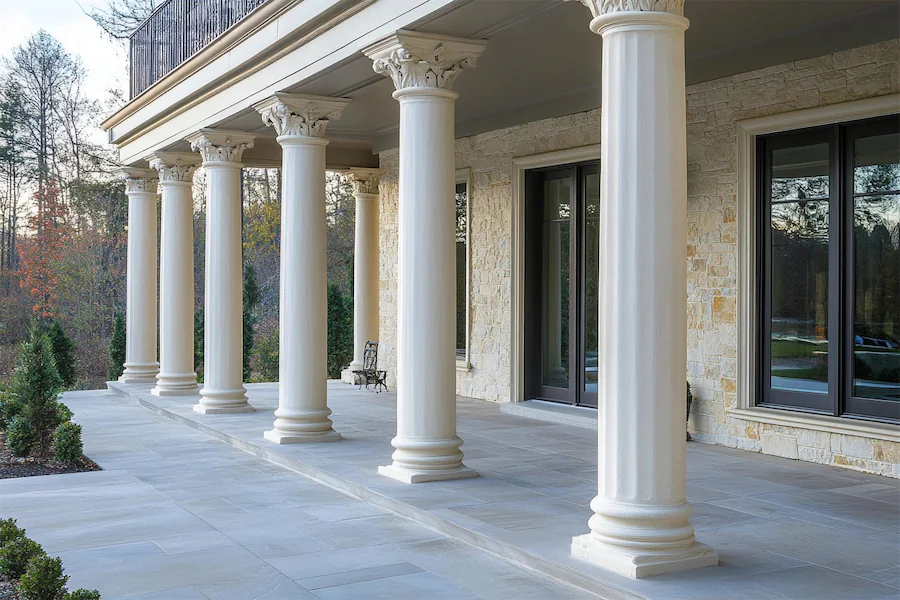Neo-Renaissance architecture, also known as Renaissance Revival, emerged in the 19th century as a movement that sought to revive and reinterpret the architectural elements of the Renaissance period. A prominent feature of this style is the use of columns, which play both structural and decorative roles, contributing to the grandeur and symmetry characteristic of Neo-Renaissance buildings.
Introduction to Neo-Renaissance Columns
In Neo-Renaissance architecture, columns are integral components that draw inspiration from classical antiquity, particularly the orders established in ancient Greek and Roman architecture. These columns are employed to convey a sense of order, proportion, and elegance, often serving as focal points in facades and interior spaces.
History and Origins of Neo-Renaissance Columns
The Neo-Renaissance movement emerged in the 19th century, reflecting a renewed interest in the art and architecture of the Renaissance period. Architects of this era sought to emulate the harmony, proportion, and classical elements that defined Renaissance architecture, adapting them to contemporary needs and technologies. Columns, as fundamental elements of classical architecture, were central to this revival, symbolizing a connection to the humanistic values and aesthetic principles of the past.
Key Features of Neo-Renaissance Columns
Neo-Renaissance columns exhibit several distinctive characteristics:
- Classical Orders: The columns adhere to the classical orders—Doric, Ionic, and Corinthian—each with specific proportions and decorative details. This adherence underscores the movement’s commitment to classical ideals and contributes to the visual harmony of the structures.
- Symmetry and Proportion: Columns are arranged symmetrically, often spanning multiple stories in a colossal order, to create a balanced and harmonious facade. This grand scale emphasizes the building’s monumental nature and reflects the Renaissance emphasis on proportion and order.
- Ornamentation: While maintaining classical forms, Neo-Renaissance columns often feature elaborate decorative elements, such as fluted shafts, intricate capitals, and bases adorned with motifs like acanthus leaves and scrolls. These embellishments add to the richness and texture of the architecture, reflecting the era’s appreciation for detail and craftsmanship.
Applications of Neo-Renaissance Columns
In Neo-Renaissance architecture, columns serve both functional and aesthetic purposes:
- Facades: Columns are prominently featured on building exteriors, framing entrances and supporting porticos, thereby enhancing the structure’s grandeur and presence. They contribute to the rhythmic repetition and symmetry that are hallmarks of the style.
- Interiors: Within grand halls and lobbies, columns delineate spaces and support expansive ceilings, contributing to the opulent interior atmosphere characteristic of Neo-Renaissance design. They often serve as focal points, drawing the eye and adding to the sense of scale and elegance.
Considerations When Choosing Neo-Renaissance Columns
When designing or restoring Neo-Renaissance structures, several factors should be considered:
- Material Selection: Traditionally, materials like stone and marble were used for their durability and association with classical architecture. In contemporary applications, materials such as cast stone or reinforced concrete may be employed to replicate the appearance while addressing modern construction requirements.
- Craftsmanship: The intricate detailing of Neo-Renaissance columns necessitates skilled artisans to achieve the desired level of ornamentation and authenticity. Attention to detail in the carving and finishing processes is crucial to maintain the architectural integrity of the style.
- Structural Integration: Ensuring that the columns are not only aesthetically pleasing but also structurally sound is essential. This involves careful planning and engineering to integrate the columns seamlessly into the building’s framework, supporting loads appropriately while maintaining the desired visual effect.
Conclusion
Neo-Renaissance columns are emblematic of a broader architectural movement that sought to reconnect with classical ideals of beauty, proportion, and harmony. By incorporating these elements, architects were able to create structures that resonated with cultural heritage while addressing contemporary needs. The enduring appeal of Neo-Renaissance columns lies in their ability to convey a sense of timeless elegance, bridging the past and present through thoughtful design and craftsmanship.
